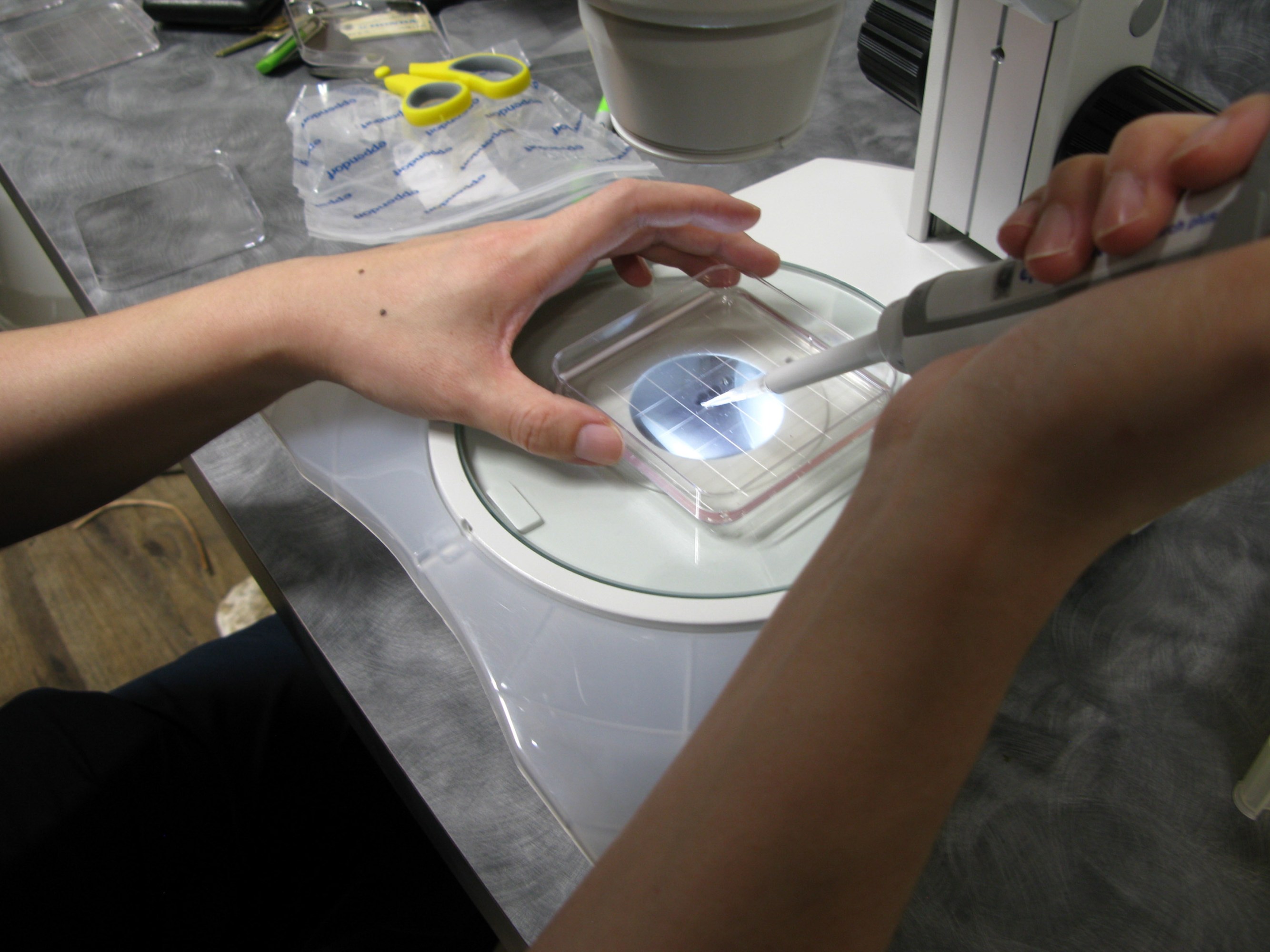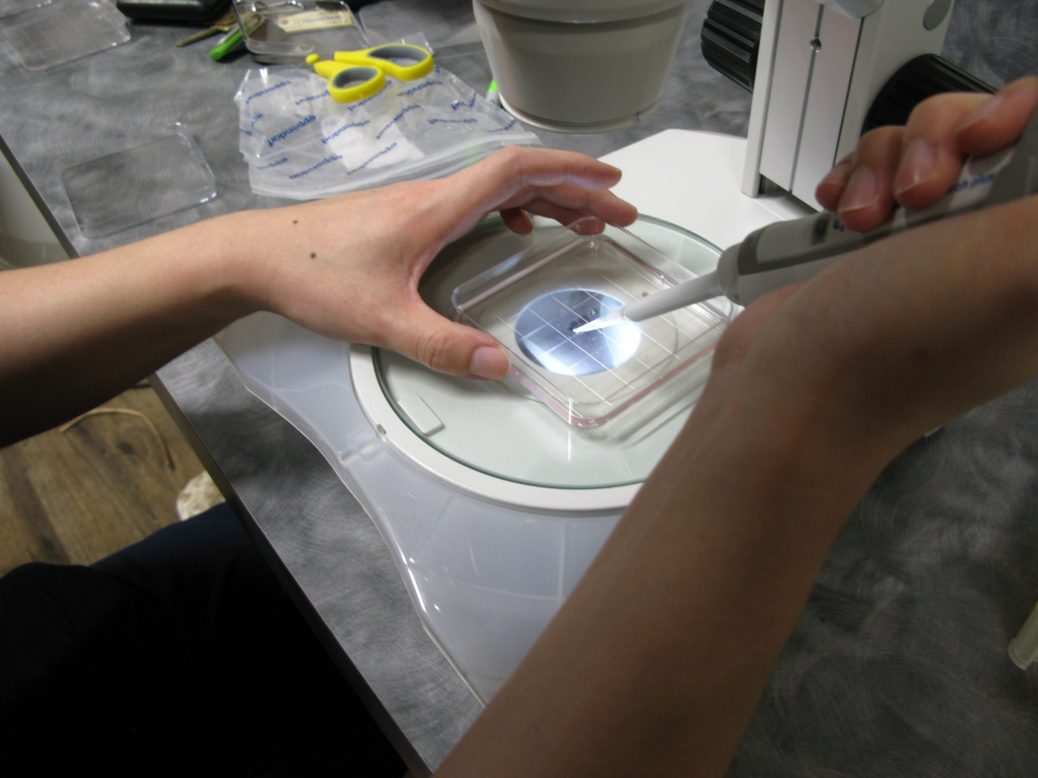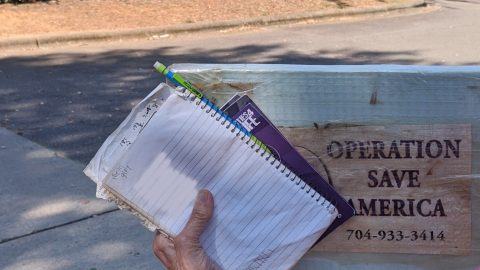But bovines may not be far behind. There’s a large assisted-reproduction industry in cattle, with more than a million IVF attempts a year, half of them in North America. Many other beef and dairy cattle are artificially inseminated with semen from top-rated bulls. “Cattle is harder,” says Jiang. “But we have all the technology.”

ANTONIO REGALADO
The thing that came out of cow #307 turned out to be damaged, just a fragment. But later that day, in Jiang’s main laboratory, students were speed-walking across the linoleum holding something in a petri dish. They’d retrieved intact embryonic structures from some of the other cows. These looked long and stringy, like worms, or the skin shed by a miniature snake.
That’s precisely what a two-week-old cattle embryo should look like. But the outer appearance is deceiving, Jiang says. After staining chemicals are added, the specimens are put under a microscope. Then the disorder inside them is apparent. These “elongated structures,” as Jiang calls them, have the right parts—cells of the embryonic disc and placenta—but nothing is in quite the right place.
“I wouldn’t call them embryos yet, because we still can’t say if they are healthy or not,” he says. “Those lineages are there, but they are disorganized.”
Cloning 2.0
Jiang demonstrated how the blastoids are grown in a plastic plate in his lab. First, his students deposit stem cells into narrow tubes. In confinement, the cells begin communicating and very quickly start trying to form a blastoid. “We can generate hundreds of thousands of blastoids. So it’s an industrial process,” he says. “It’s really simple.”
That scalability is what could make blastoids a powerful replacement for cloning technology. Cattle cloning is still a tricky process, which only skilled technicians can manage, and it requires eggs, too, which come from slaughterhouses. But unlike blastoids, cloning is well established and actually works, says Cody Kime, R&D director at Trans Ova Genetics, in Sioux Center Iowa. His company has cloned hundreds of animals, mostly prize-winning bulls.
“A lot of people would like to see a way to amplify the very best animals as easily as you can,” Kime says. “But blastoids aren’t functional yet. The gene expression is aberrant to the point of total failure. The embryos look blurry, like someone sculpted them out of oatmeal or Play-Doh. It’s not the beautiful thing that you expect. The finer details are missing.”
This spring, Jiang learned that the US Department of Agriculture shared that skepticism, when they rejected his application for $650,000 in funding. “I got criticism: ‘Oh, this is not going to work.’ That this is high risk and low efficiency,” he says. “But to me, this would change the entire breeding program.”






Recent Comments